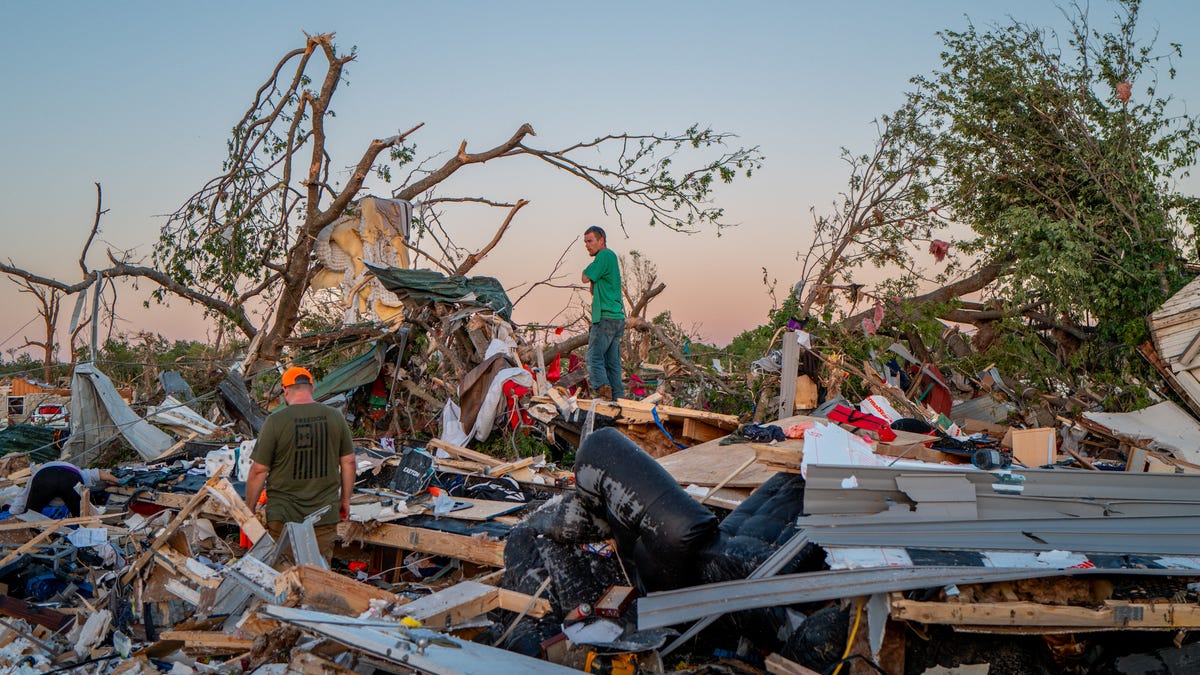The Impact of Severe-Convective Storms on Homeowner’s Insurance
The escalating expenses of homeowner’s insurance have emerged as a prominent indicator of climate change impacts in the United States. Notably, leading insurers such as State Farm and Allstate have withdrawn fire insurance offerings in California, resulting in the exclusion of numerous homeowners from coverage. Simultaneously, multiple small insurance firms have either shuttered operations or relocated from disaster-prone states like Florida and Louisiana following recent catastrophic storms.
This predicament has transcended beyond coastal states and evolved into a nationwide crisis, underpinned by an often-overlooked type of catastrophe wreaking havoc in the Midwest and Great Plains regions. These “severe-convective storms” materialize swiftly and vanish within hours or days, frequently spawning tornadoes and hail storms as they traverse the flat expanses of central America. While these events are categorized as “secondary perils” within the insurance sector, their cumulative impact is proving to be financially devastating.
Severe-Convective Storms: The Hidden Menace
The term “severe-convective storms” denotes formidable thunderstorms known for their destructive potential. These storms have precipitated a consistent annual increase of around 9% in losses between 1989 and 2022 according to Aon, a reputable insurance firm. In the most recent year, these storms collectively resulted in over $50 billion in insured losses, overshadowing the financial toll of prominent disasters like Hurricane Ian. While no single event incurred exorbitant costs, the amalgamation of these occurrences inflicted severe financial strain on the insurance industry.
Matt Junge, a key figure at Swiss Re overseeing property coverage in the US, acknowledged the industry’s lapse in accurately gauging risks posed by successive minor events. The rising prevalence of severe convective storms in regions vulnerable to extreme weather further compounds the escalating damages. Climate change potentially exacerbates these storms, given their propensity to form in hot, moist conditions, aligning with the planet’s warming trajectory.
The Economic Ramifications
The incremental nature of these losses poses a grim outlook for insurers, particularly regional entities heavily concentrated in high-risk zones. When calamitous events unfold, these insurers are obligated to disburse extensive claims, depleting reserves and edging closer to financial insolvency. Oklahoma’s Insurance Commissioner, Glen Mulready, pointed out the vulnerability of local insurers facing acute risks due to regional concentration and inadequate risk distribution.
Global reinsurers such as Swiss Re, while buffered against immediate collapse during localized disasters, face profit margin erosion from consistent attritional losses stemming from recurring severe storms. The overarching concern for reinsurers lies in sustaining earnings amid a climate of escalating losses.
Adapting to the Changing Landscape
As the insurance landscape undergoes significant upheaval, policymakers are confronted with a delicate balancing act. Regulators find themselves at a crossroads between approving rate hikes – potentially burdening homeowners – and averting insurer withdrawals from markets. The Midwest, although yet to witness mass exoduses akin to California, grapples with swelling premiums and evolving risk profiles, chiefly impacting urban centers like Denver.
Despite the harrowing scenario, the insurance industry is yet to witness substantial strides in fortifying defenses against severe convective storms. States like Florida set precedents with robust building codes post-Hurricane Andrew, enhancing resilience against extreme weather events. Notwithstanding these isolated instances, a nationwide overhaul is imperative to fortify housing stock and combat rising insurance costs effectively. Erin Collins from the National Association of Mutual Insurance Companies underlined the necessity for stringent community-scale measures to mitigate loss trends.
Fostering Resilience: A Path Forward
While the challenges loom large, the roadmap toward resilience in the face of severe storms emerges with clarity. Ian Giacomelli from the Insurance Institute for Business and Home Safety highlighted the transformative impact of stringent building standards akin to those in Moore, Oklahoma. By rallying behind storm-resistant building practices and bolstering existing infrastructure, communities can insulate themselves against financial fallout from recurrent calamities.
The onus lies on insurers to advocate for robust risk mitigation strategies, engaging stakeholders to embrace resilient building practices. By fostering a collective resolve to fortify homes and communities, the insurance industry can navigate the stormy seas of escalating losses and emerge more robust against future climate challenges.
Image/Photo credit: source url





